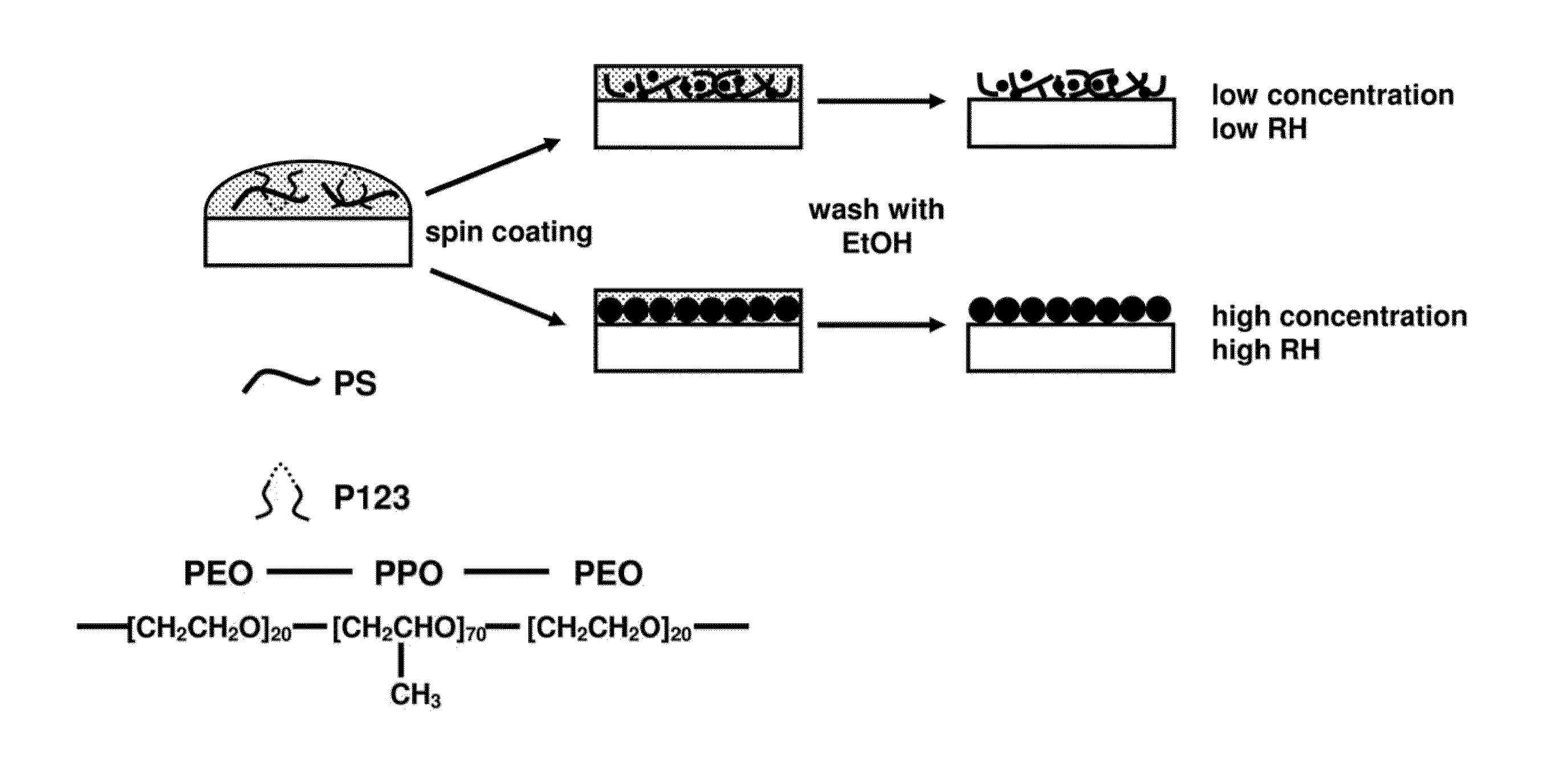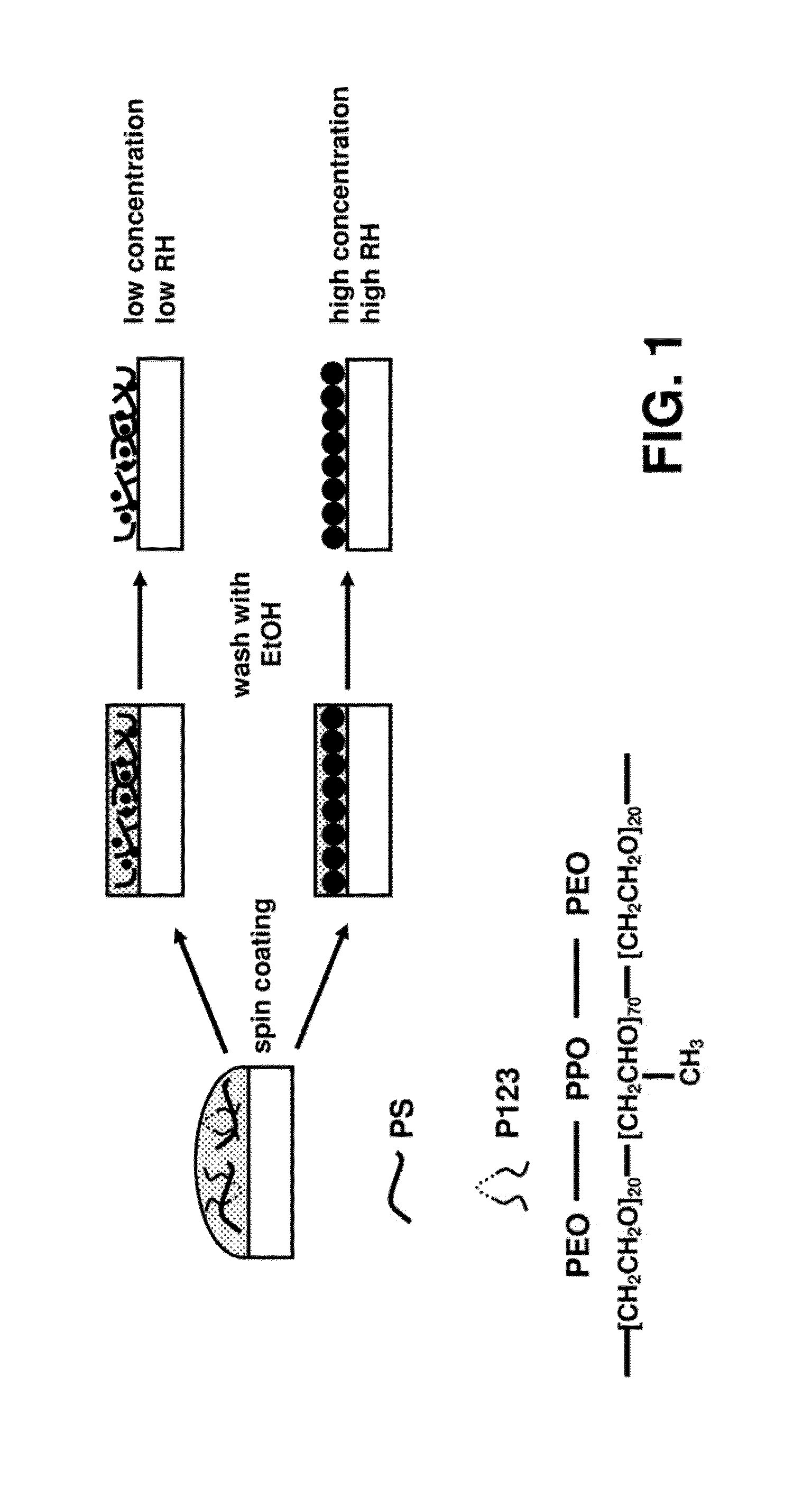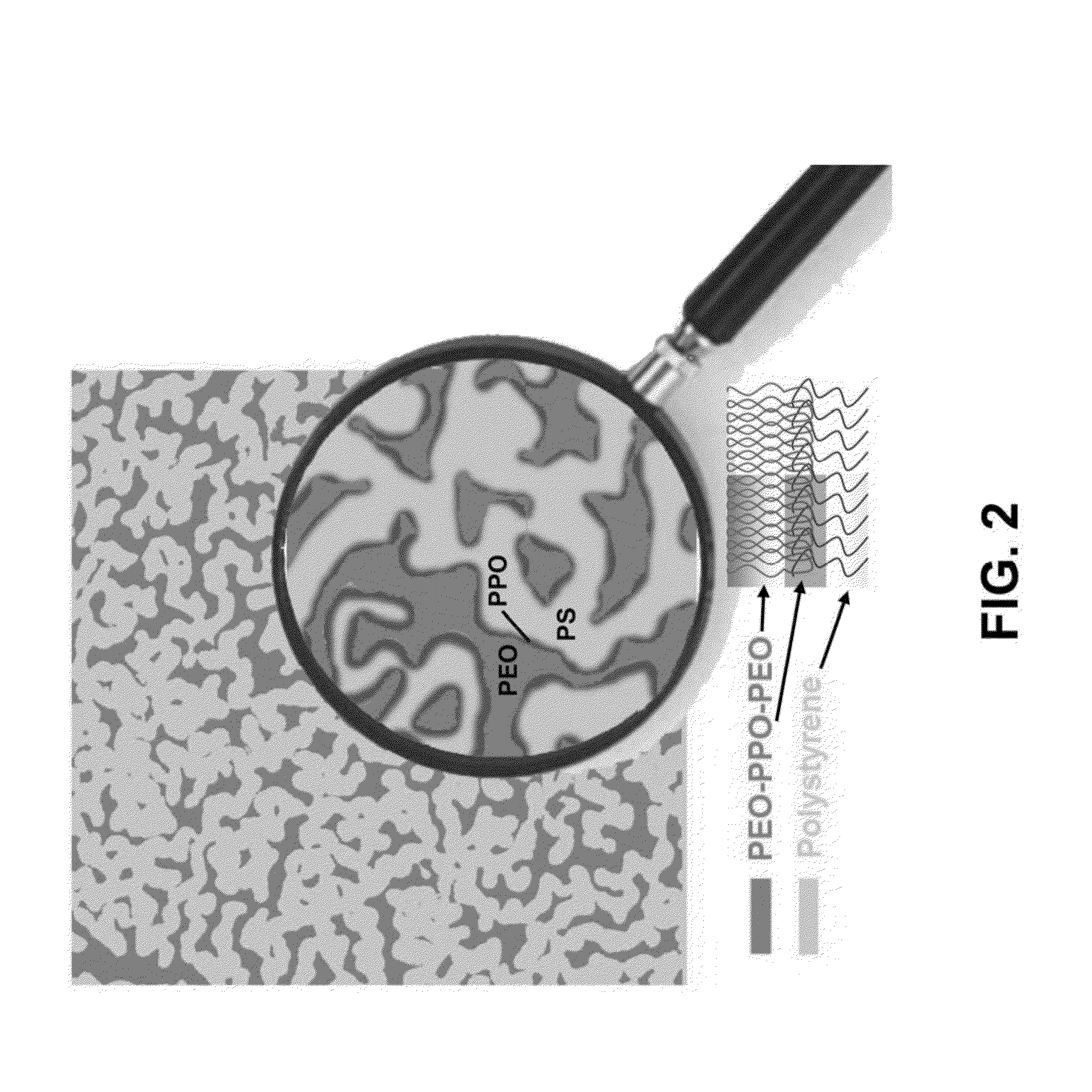Method for making nanoporous hydrophobic coatings
a hydrophobic coating and nanoporous technology, applied in the field of optical coatings, can solve the problems of high cost, high cost, complex and costly process, etc., and achieve the effects of easy and cost-effective routes, high degree of freedom, and high degree of freedom
- Summary
- Abstract
- Description
- Claims
- Application Information
AI Technical Summary
Benefits of technology
Problems solved by technology
Method used
Image
Examples
example
Polystyrene PLURONIC P123 Coating
[0028]FIG. 1 is a schematic illustration of an exemplary method of the present invention. In this example, polystyrene (PS8K Mw: 8000 DP=1.05) was dissolved into toluene to form a 1-30% first solution. Polystyrene is a transparent hydrophobic polymer with chemical formula (C8H8)n. Surfactant PLURONIC P123 was added into toluene to form a 1-30% second solution. PLURONIC P123 has the general formula EO20PO70EO20. 1 ml of the first solution was added into 1 ml of the second solution to form a homogenous solution that was stirred over 30 min. The films were formed through spin-coating of the homogeneous solution on a plasma-cleaned silicon substrate at 2000 rpm for 40 s. During spin coating, drying induces polymer phase separation. PLURONIC P123 forms micelles with the nonpolar PPO block encapsulating the hydrophobic PS core and the polar PEO blocks at the micellar surface. The films were then immersed into ethanol (EtOH) to remove the P123 and form a na...
PUM
| Property | Measurement | Unit |
|---|---|---|
| refractive index | aaaaa | aaaaa |
| RH | aaaaa | aaaaa |
| RH | aaaaa | aaaaa |
Abstract
Description
Claims
Application Information
 Login to View More
Login to View More - R&D
- Intellectual Property
- Life Sciences
- Materials
- Tech Scout
- Unparalleled Data Quality
- Higher Quality Content
- 60% Fewer Hallucinations
Browse by: Latest US Patents, China's latest patents, Technical Efficacy Thesaurus, Application Domain, Technology Topic, Popular Technical Reports.
© 2025 PatSnap. All rights reserved.Legal|Privacy policy|Modern Slavery Act Transparency Statement|Sitemap|About US| Contact US: help@patsnap.com



